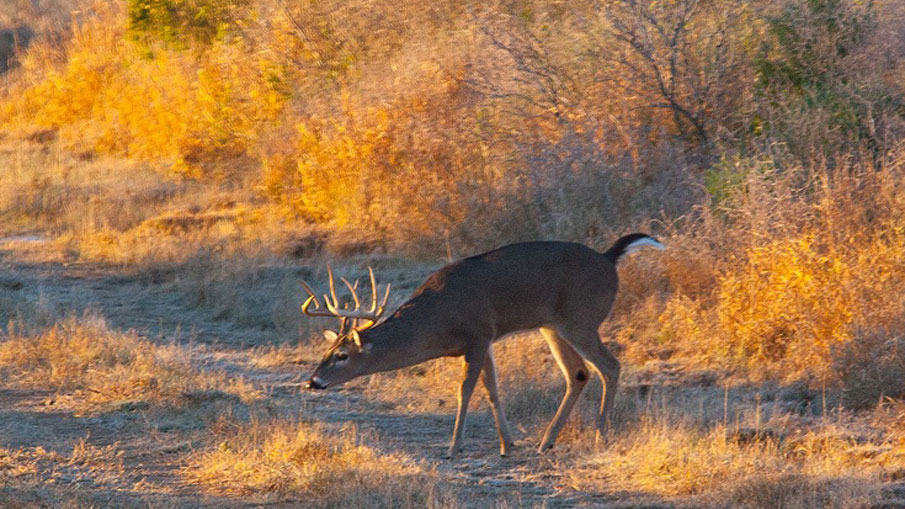
The night before opening day in many deer camps around the nation, a conversation much like the following plays out:
“They oughta be moving good tomorrow; the moon’s apogee lines up just right with the Mayan calendar, that cold front is here to stay, and this brand new Super Horny Doe Pee is sure to tickle some nose hairs. That reminds me, I need to change the blinker fluid in my truck.”
You may not recognize these as the banter of uninformed amateurs, but talk of moon phases, weather shifts and deer lures bring just that thought to many deer biologists’ minds. Let’s take a look at a couple long-held ideas about deer movements and the like.
What’s that smell?
Deer lures are big business. They create some of the foulest smelling matter in the woods that many hunters bank on each fall.
Many have success stories that are directly attributed to these stinky liquids, but for many more, there are no results and lighter wallets. So, do deer lures work? The answer is both yes and no.
Prior to the rut, bucks rub their velvety antlers on trees and scrape the ground below low hanging branches as a means of marking their territory. All manner of scents from smelly deer glands are at play in this process.
Forehead glands, pee, and others make a cocktail that’s unmistakable to a trained nose. Lure makers bank on these glands when they package doe and buck urine, which is collected from real deer via a PVC tube. Ouch.
For the record, doe urine is the same as “doe in rut” urine and the like. The only difference is what’s printed on the bottle. An interesting study proved that lures both work and, well, don’t really.
In the study, different scrapes were baited with doe urine, buck urine, human urine and — get this — new car smell. While the scrapes baited with deer urine were visited more, the human urine and even the new car smell were also visited and worked by bucks.
So, the takeaway might be that peeing by your stand isn’t the end of the world, and that lures do work, but only marginally better than a foreign scent in a scrape.
Moon phases and weather
A long-held belief is that when the moon is biggest, deer move more at night because they can see better. Also, it’s believed that certain moon phases during the rut equal increased deer activity.
A study done in Texas over seven years showed that just two of those years saw increased deer movement under the right moon phase. That’s hardly enough to hang your hat on.
Concerning weather, the bottom line is that deer don’t care whether it’s raining or not. It is true that they move up to twice as much when it’s cold, however. But if the rut’s on, they’re on their feet and prowling unless it’s something hugely out of the norm.
Site fidelity — staying put in their home range — is also high among deer. For example, during the dramatic flooding in Arkansas in 2010, several GPS-collared deer along the Little Missouri River didn’t move far enough from the river and became stranded on what became an island.
Several deer swam off of the island, but most of them stayed put. The result was that all the deer on the island died. Not from flooding, but from starvation. They ate all the food, but were too comfortable to pick up stakes. The lesson here is that even the most drastic weather doesn’t affect all the deer.
Go to 2013 Deer Camp











































